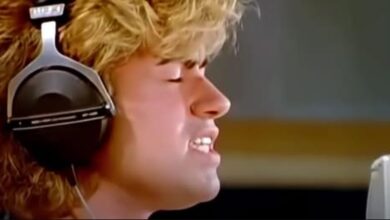Hard to believe she is now 79 years old, long live Carly Simon!!!
Procol Harum’s “A Whiter Shade of Pale,” released in 1967, stands as a hallmark of the era, blending rock with classical influences and rich, enigmatic lyrics. The song features a distinctive organ melody inspired by Johann Sebastian Bach, particularly reminiscent of his compositions. Written by Gary Brooker and lyricist Keith Reid, the track not only topped the UK charts for six weeks but also garnered significant attention in the United States, reaching No. 5 on the Billboard Hot 100. Its success during the vibrant backdrop of the 1967 “Summer of Love” solidified its place in music history, showcasing the evolving soundscape of the time.
The creation of “A Whiter Shade of Pale” was serendipitous. Gary Brooker had composed a musical idea that drew heavily from classical motifs, but it was Keith Reid’s abstract and poetic lyrics that elevated the track to new heights. The lyrical content is filled with literary references, including nods to Chaucer and Shakespeare, which adds layers of meaning and invites listeners to explore its themes. These complex narratives, combined with the haunting organ work of Matthew Fisher, create a dreamlike quality that has fascinated audiences for decades, inviting interpretations that range from romantic struggles to profound existential inquiries.
The song’s abstract narrative allows for a wide array of interpretations. Many listeners have found the lyrics to resonate with personal experiences, while others have appreciated the depth and ambiguity of Reid’s words. This openness to interpretation has contributed to the song’s lasting appeal, making it a staple in discussions about music’s ability to convey complex emotions and ideas. Critics have noted that the song’s lack of a straightforward narrative adds to its allure, allowing it to transcend traditional songwriting boundaries.
Despite the song’s immediate success, Procol Harum faced legal challenges in the years that followed. Disputes over songwriting credits arose, particularly regarding the contributions of Reid and Fisher. These legal battles highlighted the complexities of creative collaboration in the music industry and sparked discussions about authorship and recognition. Nevertheless, “A Whiter Shade of Pale” has endured, influencing numerous artists across genres, including The Beatles, who drew inspiration from its innovative sound, and Brian Wilson of The Beach Boys, who admired its blend of pop and classical elements.
Procol Harum’s early formation occurred during a time of musical experimentation. The band emerged from a desire to fuse American R&B influences with classical traditions, resulting in a sound that was both original and evocative. Their live performances often showcased this blend, captivating audiences with their unique arrangements and the rich textures of their instrumentation. One notable performance involved Jimi Hendrix, who famously joined the band on stage, further cementing their reputation as pioneers in the rock genre.
The impact of “A Whiter Shade of Pale” extends beyond its chart success; it has been covered by numerous artists, including Annie Lennox, who brought a fresh interpretation to the classic. The song’s significance has been recognized through various accolades, including its induction into both the Grammy Hall of Fame and the Rock and Roll Hall of Fame. These honors speak to the song’s enduring legacy and its status as a cultural artifact from the 1960s.
Procol Harum’s contributions to the progressive rock genre are substantial, with “A Whiter Shade of Pale” serving as a prime example of their innovative approach. Their ability to incorporate classical music elements into rock set the stage for future bands exploring similar avenues. The fusion of genres paved the way for a new wave of musicians who sought to push the boundaries of what rock music could encompass, ultimately influencing the direction of progressive rock in the years to come.
In addition to “A Whiter Shade of Pale,” Procol Harum continued to release music that showcased their evolving sound. Albums like *Shine on Brightly* and *A Salty Dog* featured tracks that built on the band’s signature style, combining intricate arrangements with thought-provoking lyrics. Their commitment to artistic growth and exploration has allowed them to maintain a loyal fanbase over the decades, demonstrating their relevance in an ever-changing musical landscape.
The story of Procol Harum and “A Whiter Shade of Pale” reflects a broader narrative about the transformative power of music during a pivotal time in history. The song captures the essence of the 1960s, a decade marked by cultural upheaval and artistic experimentation. Its blend of rock and classical influences, coupled with profound lyrical content, ensures that it remains a significant piece of musical heritage.
In the end, “A Whiter Shade of Pale” is more than just a song; it represents a moment in time when music was evolving and redefining itself. Procol Harum’s ability to combine complex themes with captivating melodies has left an indelible mark on the music world, inspiring generations of musicians and listeners alike. As it continues to be celebrated and rediscovered, the song’s legacy endures, proving its timelessness and significance in the canon of rock music.





